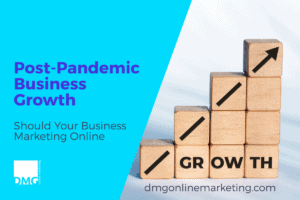
14 Email Marketing Myths That are Holding Your Business Back
Email comes with a stigma, and stigmas come with preconceptions. When these preconceptions are wrong, they become myths, and these are keeping entrepreneurs from utilizing email marketing to its fullest potential. It is a powerful tool that needs to be practiced early and often, so we are here to debunk 14 of the most detrimental email marketing myths to help get you and others back into the game.
[dropcap]1.[/dropcap] Trigger words get your email jailed
This is an outdated belief. While spam filters exist to keep unwanted emails out of peoples’ folders, they are not as nitpicky as they used to be. Back in the day, if an email so much as hinted at containing the word ‘free’ in the body it would be sent straight to spam jail. Today, spam filters have progressed to the point where they will recognize actual spam versus an honest email, so don’t be afraid of using trigger words like ‘free’ or ‘cash’ or ‘save’. As long as you’re not being backed by an inheritance from a Nigerian prince, you’ll be okay.
[dropcap]2.[/dropcap] Your email list is your loyal readership
Unfortunately, this isn’t true either. Yes, you have their emails written down and signed in your eLedger, but this does not mean that they’re 100% interested in hearing from you. The truth is that some entered their emails onto your list of incentives or through proxy forms, meaning that they actually don’t care all too much about hearing from you. But have no fear, because this leads us to debunking the next misconception.
[dropcap]3.[/dropcap] Unsubscribes have no silver lining
In fact, they have tons of silver linings. For starters, the more people who unsubscribe from your list the more concise your list is, meaning that the scale between people who care about what you have to say and people who aren’t so interested is slowly tipping in your favor. The second silver lining is that you now have analysis tools and metrics to see at exactly what point in your email marketing campaign, they left and you can use that to strengthen your overall campaign.
[dropcap]4.[/dropcap] Email is a perk to keep people on board, not a lead generator itself
Though perks and incentives sent through emails do in fact do a lot of work towards nurturing your leads, the little seen side of email marketing is email forwarding, or “word-of-email”. People who like your emails will forward them to their friends (and this does happen) and those friends can then in turn subscribe to your email list. Boom, lead generation.
[dropcap]5.[/dropcap] Email is only a perk: Part 2
This email marketing myths warrant a double dose of debunking, and for good reason. Email can be a lead generator in two very different ways, and the first is listed in above. The second way is through transitioning subscribers into leads. Maybe not all the way right away, but by taking someone who signed up to your email list just to read new blog posts and enticing them to sign-up for a webinar or a monthly catalog or even a newsletter is an upgrade along the ladder towards a profitable client. Emails are powerful lead generators, so don’t sell them short.
[dropcap]6.[/dropcap] Fish only flock to shiny nets
Luckily, the leads are not fish and they look to substance far more often than style. It is because of that principle that you don’t have to bust your chops every time you send out an email—sometimes plain text is the way to go. But this doesn’t mean you should slack; make the text easy to read and organize it before sending out a block of text. It doesn’t have to be stylish, but no one will go near it if it looks like fish-rot.
[dropcap]7.[/dropcap] The open rate is a perfect metric
The way your analysis tools determine the open rate is by counting how many times a photo has been loaded from within your emails. Anytime you get an email and a picture loads within it, the people who sent it probably get a notification that tells them one of their emails has been opened. But what if your subscribers use outlook, which doesn’t load pictures? If that’s the case, then your open rate will be less than what it actually is, sometimes far less, and an otherwise incredibly successful email might be scrapped because of it.
[dropcap]8.[/dropcap] The open rate is a useless metric
It might not be perfect, but it sure is useful. With the numbers you do receive, you can compare them to subject headers and other email properties to discern which combination of words, phrases, and email types lead to a higher open rate.
[dropcap]9.[/dropcap] Email marketing is a cheap route
Au contraire, if you’re trying to reach a massive base it can really pile up. With your email management platform and your organizers and time investment, you’ll end up spending maybe a bit more than you thought you would. While it is your responsibility to determine how much you’re willing to spend on email marketing, make sure you’re spending enough to not ruin your reputation through cheap emails.
[dropcap]10.[/dropcap] All emails sent to a list are received
Not true either. While this can rely on the programming side of the equation quite a bit, a large part of this is because of the human side of the exchange. Sometimes your email will be lost in their inbox, other times it will be caught by a spam filter or simply deleted by the user without a second thought. Maybe you’ve even got fake emails in your list or even you misspelled some emails. It can and does all happen so you should take this into account when you’re planning your strategy.
[dropcap]11.[/dropcap] When an email is received, the message is received
Computers, browsers, and other setups all determine which formats can and cannot be opened on the receiving end. Sometimes your email will simply not appear as it is supposed to, and that clever design aspect you worked so hard on might get re-aligned and botched beyond comprehension. Likewise, if your email is just one big image of a flyer then those using Outlook won’t see it. Keep the layout simple and reiterate all information from images through text for maximum compatibility.
[dropcap]12.[/dropcap] Like spam mail, too much email is unwanted email
How do you know what exactly is going on through the heads of the people on your email list? Maybe some of them genuinely look forward to your weekly emails and would like them to be changed to daily emails. As long as you aren’t absolutely bombarding your list with emails, keep them consistent.
[dropcap]13.[/dropcap] You have to be involved with every email
Just sit back and hand the reins over to someone else on this one. You don’t absolutely have to be the one in charge of every email, and someone else can get your subscribers what they need as well as you could. Focus on other things and leave the email marketing to someone with more time on their hands if you have to. After all, the company isn’t you and you aren’t the company, and your email subscribers are more interested in the company than anything else.
[dropcap]14.[/dropcap] Email is a sideshow to the main lead generating game
Email marketing might just well be your main attraction. It drives traffic, it generates leads, it converts leads, it nurtures leads, it gives you optimization metrics, it acts as free advertisement, and it communicates with your subscribers on a personal level. It’s quite literally the whole package.
Email marketing is a powerful force to be reckoned with and it is the one great weapon to have in your pocket. Use it wisely and use it often and you will see your leads, profits, clients, and sales all go in a noticeably upward direction very soon. That is it, we have debunked the 14 most common email marketing myths, now get your all business marketing channels producing quality leads for your sales team.



